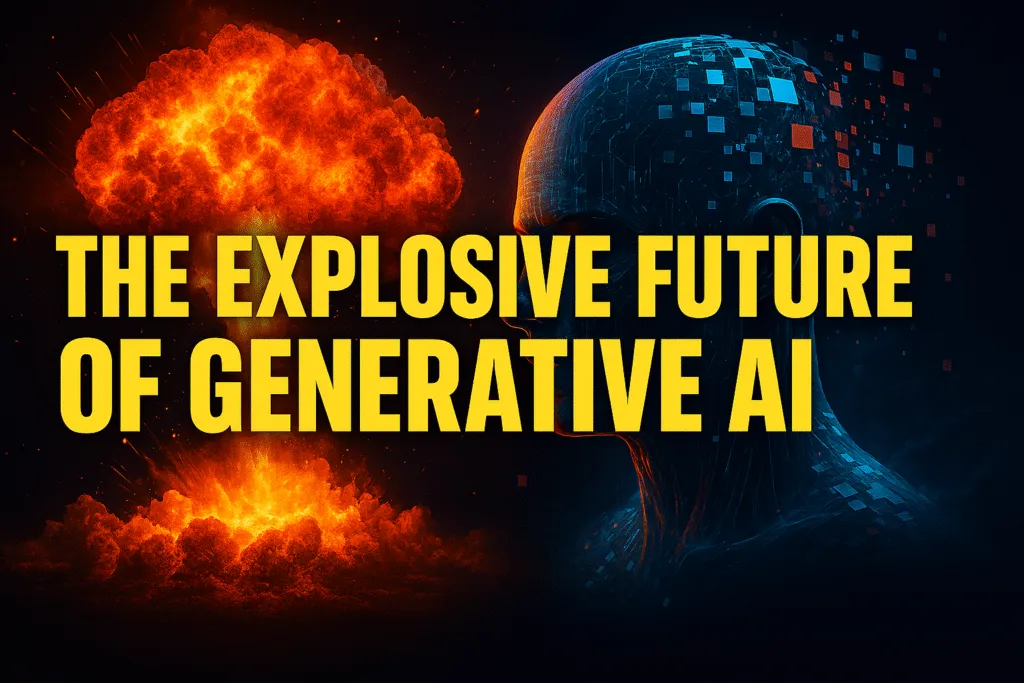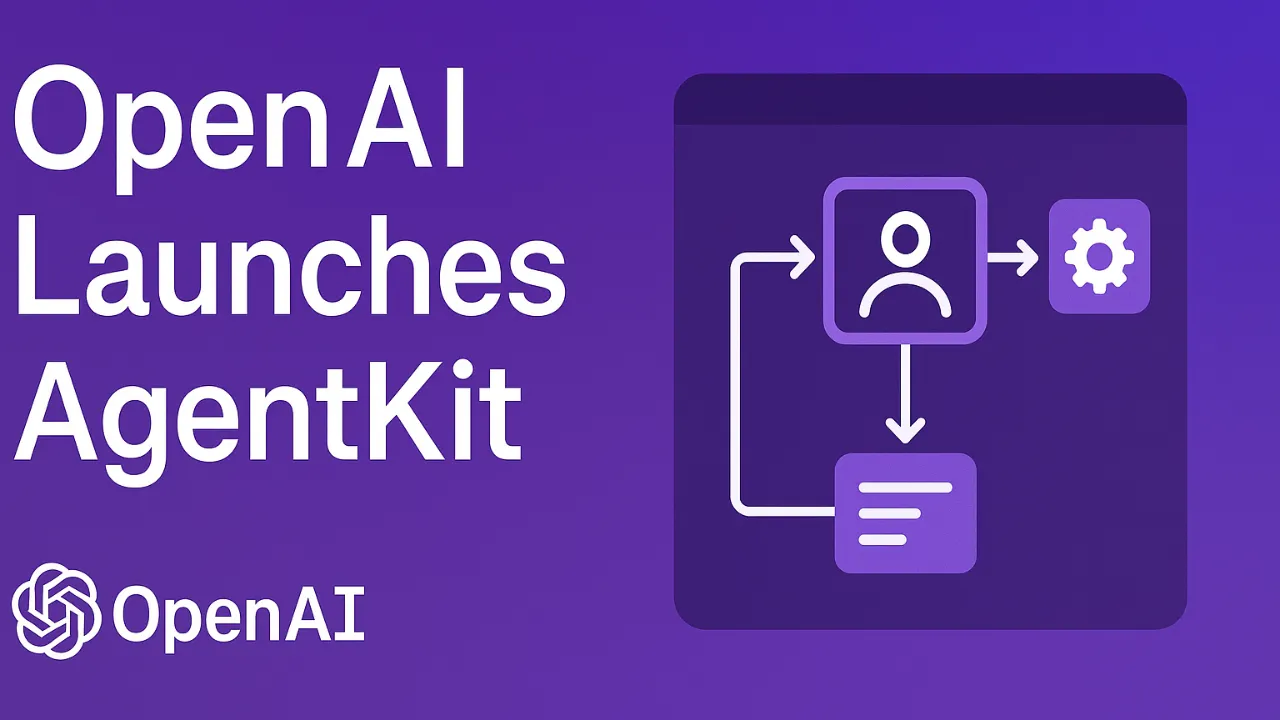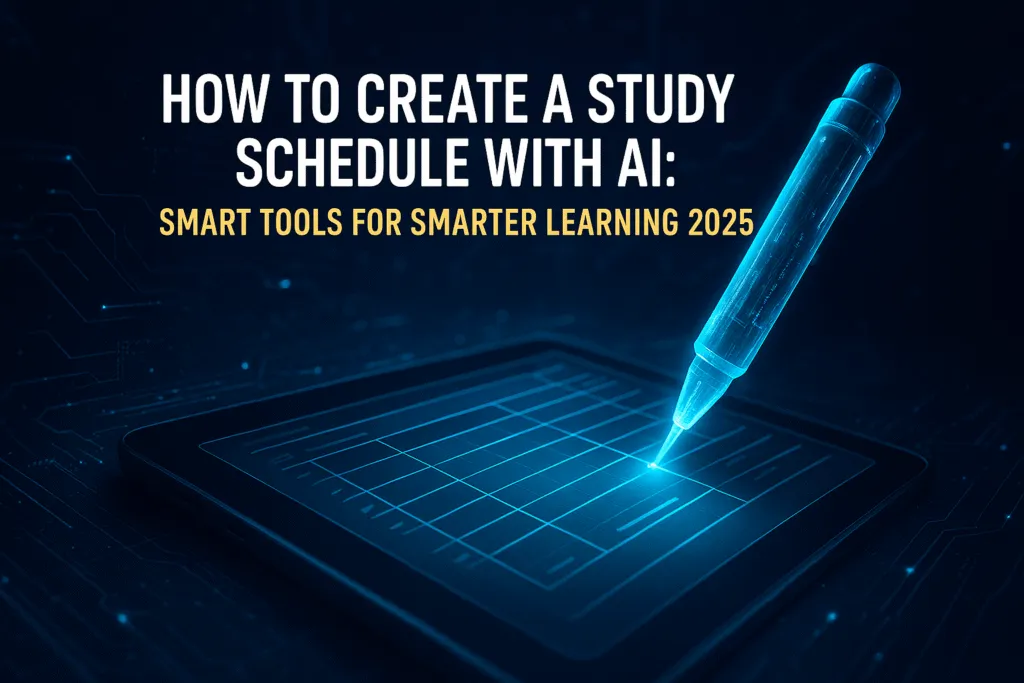Introduction
The Future of Generative AI is one of the most exciting and fast-evolving areas in technology today. Over the past few years, generative AI has moved from being a niche concept to a mainstream tool, powering everything from content creation and design to software development and data analysis. In 2025, the technology has matured significantly, offering advanced capabilities that were unimaginable just a decade ago. This rapid growth is transforming industries, creating new job opportunities, and changing the way people interact with technology.
Generative AI is no longer limited to producing text or images. It can now generate realistic videos, 3D models, voice simulations, and even fully functional applications with minimal human input. Businesses are leveraging these capabilities to speed up workflows, reduce costs, and innovate faster than ever. For professionals, this opens the door to enhanced creativity and productivity, as AI becomes more of a collaborative partner than a simple tool.
However, the future of generative AI is not just about technological breakthroughs. It also brings important questions around ethics, copyright, data privacy, and the potential misuse of AI-generated content. As the technology becomes more accessible, there is a growing need for regulations and best practices to ensure it is used responsibly.
Looking ahead, we can expect generative AI to integrate deeply with other emerging technologies such as augmented reality, blockchain, and advanced robotics, creating entirely new digital experiences. Whether you are a business owner, developer, or creative professional, understanding and adapting to the future of generative AI will be crucial to staying competitive in this rapidly evolving digital landscape. The opportunities are vast, and those who embrace this transformation early will be best positioned to lead in the AI-driven world.
Brief History of Generative AI
The Future of Generative AI can only be fully understood by looking back at its origins and evolution. Generative AI traces its roots to early artificial intelligence research in the mid-20th century, when scientists began experimenting with machine learning models capable of producing simple outputs based on patterns in data. Early breakthroughs like neural networks in the 1980s laid the foundation for more advanced systems, but it wasn’t until the 2010s that generative AI truly began to take shape with the introduction of deep learning.
One of the major milestones came in 2014, when Generative Adversarial Networks (GANs) were introduced by Ian Goodfellow and his team. This approach allowed AI to generate highly realistic images, videos, and audio by using two competing networks—a generator and a discriminator—that improved through constant feedback. GANs sparked a wave of innovation in image synthesis, style transfer, and creative AI applications.
The late 2010s and early 2020s saw another leap forward with the rise of transformer-based models like GPT, BERT, and later GPT-4, which expanded generative AI beyond visual media into natural language processing. These models could generate human-like text, answer complex questions, and even write code, making AI a versatile tool for both businesses and individuals.
By the mid-2020s, generative AI evolved into multi-modal systems capable of seamlessly blending text, images, audio, and video generation in a single workflow. This shift made the technology far more accessible, powerful, and adaptable across industries such as entertainment, healthcare, marketing, and education.
Understanding this history shows that the future of generative AI is not a sudden leap, but the result of decades of steady progress. Each breakthrough builds on the last, paving the way for even more advanced and intelligent systems in the years to come.
Current State of Generative AI in 2025
The Future of Generative AI in 2025 reflects a remarkable transformation from its early experimental stages to becoming an essential part of daily life and business operations. Today, generative AI is not just a niche tool for tech enthusiasts—it’s a mainstream technology powering industries from creative media to scientific research. The latest AI systems can seamlessly produce high-quality text, ultra-realistic images, lifelike voiceovers, and even interactive 3D environments, all within minutes.
In 2025, the technology has matured into advanced multi-modal models that can handle text, visuals, audio, and video simultaneously, enabling fully integrated creative workflows. For example, a single prompt can generate a marketing campaign complete with branded visuals, ad copy, and promotional videos. This level of sophistication has made generative AI a cornerstone for content creation, automation, and innovation across fields such as education, healthcare, entertainment, and product design.
Another defining characteristic of generative AI in 2025 is its improved accessibility. Cloud-based AI platforms, open-source models, and no-code tools have made it possible for small businesses, startups, and individuals to leverage the technology without deep technical expertise. Additionally, ethical and regulatory frameworks are starting to catch up, with new guidelines on transparency, bias mitigation, and intellectual property rights shaping responsible usage.
Performance-wise, today’s generative AI models are significantly more efficient, offering faster outputs while consuming less computational power. This has expanded their deployment into mobile devices, AR/VR platforms, and edge computing environments.
The current state shows that generative AI is no longer just an experimental frontier—it’s a powerful, democratized, and highly integrated tool shaping the way we work, create, and solve problems. As adoption continues to grow, the stage is set for even more groundbreaking developments in the years ahead.
Key Technological Advancements Shaping the Future
The Future of Generative AI is being shaped by a series of groundbreaking technological advancements that are pushing the boundaries of what AI can achieve. One of the most significant is the rise of multi-modal AI models, which can process and generate text, images, audio, and video in a single workflow. This integration allows for more creative and contextually accurate outputs, opening doors for industries such as entertainment, design, and education.
Another major leap is in the area of real-time AI generation. Thanks to improved processing power and optimized algorithms, generative AI systems in 2025 can produce high-quality content instantly, enabling applications like live translation, interactive storytelling, and adaptive learning platforms. This shift toward instant generation enhances productivity and creates new possibilities for immersive user experiences.
The development of AI agents capable of autonomous task management is also shaping the landscape. These agents can understand goals, make decisions, and execute complex sequences of actions without constant human input, making them valuable for business automation, research, and creative collaboration.
In parallel, advances in ethical AI and bias reduction are ensuring that generative AI evolves responsibly. New training methods and regulatory frameworks focus on transparency, explainability, and minimizing harmful outputs, making the technology safer for global adoption.
Moreover, the integration of generative AI with emerging fields like quantum computing, AR/VR, and the Internet of Things is setting the stage for even more transformative capabilities. This convergence will enable AI to handle larger datasets, simulate complex environments, and power next-generation digital experiences.
These advancements collectively point to a future where generative AI is faster, smarter, more accessible, and deeply embedded in everyday life, reshaping how we communicate, create, and innovate.
Generative AI in Different Industries
The Future of Generative AI is transforming industries worldwide by offering innovative solutions that enhance creativity, efficiency, and personalization. In the healthcare sector, generative AI is revolutionizing diagnostics, drug discovery, and personalized treatment plans. AI models can simulate complex biological processes, predict patient outcomes, and even assist in designing new medicines faster than traditional methods.
In the entertainment and media industry, generative AI is enabling hyper-realistic visual effects, personalized content recommendations, and automated scriptwriting. Filmmakers, game developers, and content creators are using AI to design immersive worlds, generate lifelike characters, and adapt stories in real time to audience preferences.
In the education sector, AI-powered tools are creating interactive learning experiences, personalized study materials, and virtual tutors that adapt to each student’s pace and style. This ensures a more inclusive and effective learning environment, especially for remote and underserved communities.
The business and marketing world is also reaping the benefits. Generative AI can craft targeted advertisements, design logos, and produce entire marketing campaigns tailored to specific audiences. This allows companies to cut costs while maintaining creativity and brand consistency.
In manufacturing and engineering, AI is helping design complex products, simulate prototypes, and optimize production processes with unmatched speed and precision. By predicting potential flaws before production, companies save time, resources, and reduce waste.
Even in fields like finance, law, and customer service, generative AI is streamlining workflows, generating reports, and providing data-driven insights that support better decision-making.
Across all these industries, the adoption of generative AI is not just about automation—it’s about enabling human creativity to reach new heights, driving innovation, and reshaping the future of how work gets done.
Ethical and Legal Challenges
The Future of Generative AI brings immense opportunities, but it also introduces a complex web of ethical and legal challenges that cannot be ignored. One of the primary concerns is intellectual property rights. As AI systems generate images, music, code, and written content, questions arise over ownership—should the credit go to the AI’s developer, the user, or no one at all? Current laws in many countries are not yet equipped to handle these scenarios, leading to uncertainty and potential disputes.
Another major issue is bias and fairness. Generative AI learns from vast datasets that may contain historical biases, misinformation, or discriminatory patterns. If not carefully monitored, these biases can be amplified in AI-generated content, affecting everything from hiring decisions to medical advice. This makes ethical oversight and transparent dataset management crucial for responsible AI development.
Privacy is also a pressing concern. Generative AI can produce highly realistic deepfakes, which, while useful for creative purposes, can be exploited for misinformation, identity theft, or reputational harm. Regulating such misuse while allowing creative freedom is a challenge that lawmakers and tech companies are still grappling with.
Legal compliance is further complicated by varying regulations across different countries. Some regions are moving quickly to establish AI governance frameworks, while others lag behind, creating inconsistencies that global businesses must navigate.
To address these challenges, collaboration between governments, AI developers, ethicists, and legal experts is essential. Building robust ethical guidelines, enforcing strict data protection laws, and promoting transparency in AI-generated outputs can help ensure that innovation in generative AI continues without compromising human values or societal trust.
Generative AI + Other Emerging Technologies
The Future of Generative AI becomes even more exciting when combined with other emerging technologies, creating powerful synergies that can transform industries. One of the most promising combinations is with blockchain. By integrating blockchain’s decentralized and transparent nature, generative AI outputs can be verified, ensuring authenticity and preventing misuse, especially in areas like digital art and intellectual property protection.
Pairing generative AI with the Internet of Things (IoT) can enable smarter, more responsive environments. For example, AI-generated predictive models can optimize energy usage in smart cities or personalize experiences in connected homes. Similarly, when integrated with robotics, generative AI can design adaptive systems that learn and evolve, improving automation in manufacturing, healthcare, and logistics.
Extended reality technologies, such as augmented reality (AR) and virtual reality (VR), also gain a boost from generative AI. AI can dynamically create immersive environments, lifelike characters, and personalized interactions, making AR/VR experiences more engaging for gaming, education, and virtual collaboration.
In healthcare, merging generative AI with biotechnology can lead to breakthroughs like AI-generated drug formulas, personalized treatment plans, and synthetic medical data for safe research. When combined with quantum computing, generative AI could achieve unprecedented speed and complexity in problem-solving, opening doors to innovations we can barely imagine today.
These integrations are not just futuristic concepts—they are already beginning to take shape. The challenge lies in ensuring that such technological convergence remains ethical, secure, and beneficial for society. As these technologies mature together, we are likely to see entirely new industries and opportunities emerge, reshaping the global economy and daily life in profound ways.
The Human-AI Collaboration Model
The Future of Generative AI is not about replacing humans, but about creating a collaborative model where human creativity and machine intelligence work together. In this model, AI becomes a powerful partner that can handle repetitive, data-heavy, and time-consuming tasks, allowing humans to focus on strategy, innovation, and emotional intelligence—areas where machines still fall short.
For example, in content creation, generative AI can produce drafts, suggest design elements, or generate multiple creative options, while human experts refine the tone, context, and originality. In research and development, AI can rapidly simulate and test countless possibilities, but human researchers decide which solutions align with ethical, practical, and market needs.
This collaborative approach is also transforming industries like healthcare, where doctors use AI-generated diagnostic insights but still rely on human judgment for final decisions. In architecture, designers can explore AI-generated blueprints, then personalize them to meet cultural, environmental, and aesthetic standards.
The key to making this collaboration successful lies in building trust. Users must understand how AI works, what its limitations are, and how to verify its output. Transparency, explainability, and user control will ensure AI is a tool for empowerment rather than dependency.
As generative AI evolves, this partnership will likely become seamless—humans providing direction and creativity, AI offering speed and scale. Together, they can achieve results that neither could accomplish alone, unlocking innovations that redefine how we live, work, and create.
Predictions for 2025 and Beyond
The Future of Generative AI in 2025 and beyond promises to be a transformative era, driven by rapid advancements in algorithms, computing power, and accessibility. By this point, generative AI will likely become a core part of everyday workflows across industries, seamlessly integrating into tools people already use. Expect AI models to become far more context-aware, capable of understanding nuances in language, emotions, and cultural references, making their outputs highly relevant and human-like.
One major prediction is the rise of hyper-personalized AI experiences. Instead of generic outputs, AI will tailor its responses to individual preferences, habits, and professional needs, whether for education, healthcare, entertainment, or business. We’ll also see significant improvements in multimodal capabilities—AI systems that can fluently combine text, images, audio, and video in a single interaction, opening up new creative and commercial possibilities.
In business, generative AI could take over more complex decision-support roles, providing deep insights from vast datasets in real time. However, the technology’s growth will also bring tighter regulations, as governments and organizations seek to ensure transparency, protect intellectual property, and mitigate bias or misuse.
Looking further ahead, human-AI collaboration will deepen, with AI acting not just as a tool but as a trusted creative partner. The lines between human and machine-generated content will blur, raising important questions about authorship, authenticity, and originality.
By the late 2020s, generative AI could evolve into something akin to a universal assistant—capable of understanding and executing tasks across domains with minimal instruction. While the potential is enormous, the challenge will be to harness its power responsibly, ensuring it enhances human potential without diminishing creativity, ethics, or control.
Risks and Uncertainties Ahead
While the Future of Generative AI holds immense promise, it also comes with a set of risks and uncertainties that cannot be ignored. As AI systems become more powerful and autonomous, the potential for misuse grows significantly. One major concern is the rise of deepfakes and misinformation—highly realistic, AI-generated content that can be used to manipulate public opinion, damage reputations, or influence elections. The more convincing generative AI becomes, the harder it will be to distinguish between real and fabricated information.
Another uncertainty lies in intellectual property and copyright disputes. As AI models are trained on vast amounts of data, often scraped from the internet, questions arise about ownership of the content they produce. Without clear legal frameworks, businesses and creators may find themselves in uncharted territory regarding rights, attribution, and compensation.
Bias and fairness also remain critical issues. Even with advancements in training methods, AI can inherit and amplify biases present in its data sources, leading to discriminatory or harmful outcomes. This risk is especially concerning in areas like hiring, healthcare, and law enforcement, where biased decisions can have serious real-world consequences.
Economic disruption is another possible outcome. As generative AI automates more creative and analytical tasks, some jobs may become obsolete, requiring rapid reskilling and adaptation in the workforce. At the same time, overreliance on AI could reduce human critical thinking and creativity if not balanced with proper education and awareness.
Finally, regulatory uncertainty could slow innovation. Different countries may adopt varying policies, creating fragmented standards that make global AI development and deployment more challenging. In the coming years, the key will be finding a balance—maximizing the benefits of generative AI while putting robust safeguards in place to manage its risks effectively.
Opportunities for Businesses and Individuals
The Future of Generative AI opens up a wealth of opportunities for both businesses and individuals, making it one of the most transformative technologies of our time. For businesses, generative AI offers new ways to innovate, streamline operations, and personalize customer experiences at scale. From generating high-quality marketing content in minutes to creating realistic product prototypes through AI-powered design tools, companies can significantly reduce time-to-market and improve efficiency. In sectors like e-commerce, finance, and entertainment, AI-driven personalization can boost engagement, retention, and sales.
Small businesses and startups, in particular, stand to gain a competitive edge by leveraging generative AI without the need for massive budgets or large teams. Automation of tasks such as content creation, customer service, and data analysis allows entrepreneurs to focus on strategic growth rather than repetitive work.
For individuals, the benefits are equally compelling. Generative AI can act as a personal assistant, creative partner, or even a career accelerator. Writers, artists, and designers can use AI tools to spark new ideas, refine their work, or explore styles and concepts they might not have considered otherwise. Professionals in any field can enhance productivity by using AI for drafting reports, analyzing complex datasets, or preparing presentations in a fraction of the time.
Education and skill development are also evolving with generative AI, as learners can receive tailored guidance, practice scenarios, and interactive simulations that match their personal learning pace and goals. This democratization of access to advanced technology means that opportunities once limited to large corporations or elite professionals are now within reach of anyone with curiosity and ambition.
In short, the Future of Generative AI presents a powerful toolkit for innovation, efficiency, and creativity, offering pathways for growth that were unimaginable just a few years ago.
Conclusion: Embracing the AI Future Responsibly
The Future of Generative AI is filled with promise, but its full potential can only be realized if it is approached with responsibility and foresight. As this technology continues to evolve, it is reshaping industries, redefining creativity, and offering unprecedented opportunities for innovation. However, with such transformative power comes the obligation to address ethical, legal, and societal challenges. Striking the right balance between rapid adoption and thoughtful regulation will be key to ensuring that AI benefits all and not just a select few.
For businesses, embracing generative AI responsibly means implementing transparent practices, safeguarding user data, and ensuring fairness in AI-driven decisions. For individuals, it’s about using AI tools as partners rather than replacements—leveraging their capabilities to enhance creativity, productivity, and problem-solving without losing the human touch. Education and public awareness will also play a crucial role, as an informed society is better equipped to navigate the risks and harness the opportunities AI brings.
Collaboration between governments, tech companies, researchers, and the public will be essential to create global frameworks that encourage innovation while protecting against misuse. This includes addressing issues like bias, intellectual property rights, and the environmental impact of AI training models.
Ultimately, the Future of Generative AI should not be feared but guided. By combining human values with technological progress, we can build a future where AI serves as a force for good—empowering creativity, driving economic growth, and solving complex global challenges. The key lies in our collective ability to innovate with integrity, ensuring that the AI-powered world we create is not only smarter but also fairer and more humane.
Also Read: Online Courses to Boost Career: Supercharge Your Skills for 2025.
FAQs: Common Questions About the Future of Generative AI
Q1. What is Generative AI and how does it work?
Generative AI is a type of artificial intelligence that creates new content—such as text, images, music, or even code—by learning from vast datasets. It uses advanced algorithms like neural networks to understand patterns and produce original, human-like outputs.
Q2. Why is the Future of Generative AI important?
The Future of Generative AI matters because it has the potential to revolutionize industries, enhance creativity, and solve complex problems. From automating tasks to developing innovative products, it is shaping how businesses and individuals will operate in the coming years.
Q3. Which industries will benefit most from Generative AI?
Industries such as healthcare, education, entertainment, marketing, manufacturing, and software development are already seeing major benefits. In the future, almost every sector is expected to integrate generative AI in some form.
Q4. What are the main risks associated with Generative AI?
Key risks include misinformation, deepfakes, job displacement, data privacy concerns, and ethical issues like bias in AI outputs. Responsible development and regulation are crucial to mitigating these risks.
Q5. How can businesses prepare for the Future of Generative AI?
Businesses should invest in AI literacy, adopt ethical AI frameworks, experiment with generative AI tools, and focus on human-AI collaboration to maximize productivity while maintaining trust.
Q6. Will Generative AI replace human creativity?
No, Generative AI is more likely to complement rather than replace human creativity. While it can generate ideas and content, human insight, emotion, and context remain irreplaceable.













